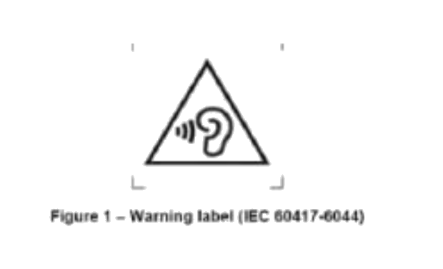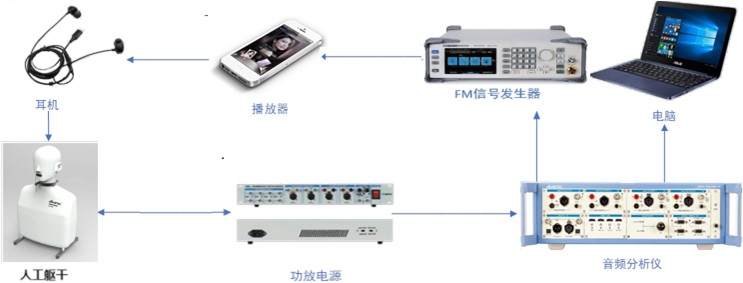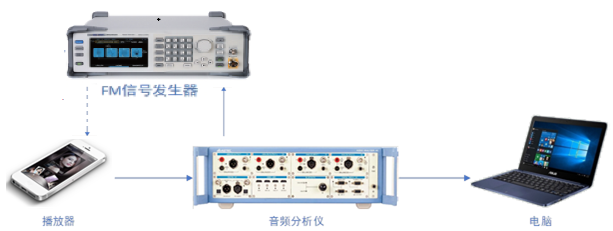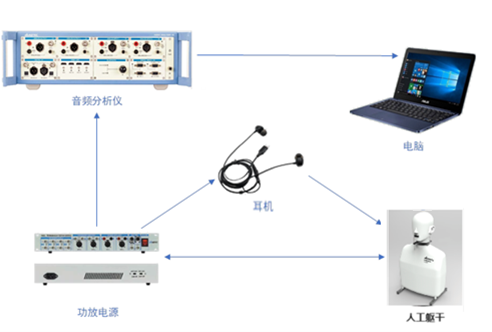1. Introduction
Headphones are common items in our daily lives, often used for listening to music, watching TV, making calls, etc. Prolonged use of high volume can cause irreversible damage to the ears. To regulate the sound level of headphones and protect users' hearing, the EU introduced the EN50332-1 standard in 2000, specifying the maximum sound pressure level (SPL) for the entire system of players and headphones. In 2004, EN50332-2 was released, regulating the maximum output voltage of players and the broadband characteristic output voltage for headphones. With the popularity of smart products, EN50332-3 was introduced, mainly targeting safety specifications for smart headphones and players.
In 2022, China's safety standard GB 4943.1-2022 added relevant regulations in Chapter 10.6 Safety Protection for Acoustic Energy Sources, incorporating content from EN50332. The standard was officially implemented on August 1, 2023, forming the current safety specification for audio products in China.
2. Overview of the Standard
——Based on the content of the 4943 standard, our company has summarized it into the following test components:
The 4943 standard consists of three parts:
● Whole-machine sound pressure test
● Separate tests for components: headphones and players
● Safety warning test
2.1 Whole-machine Sound Pressure Test
The test object is the combination of a player and headphones (tested as an integrated system). The player plays a test audio file, adjusts the equalizer settings, turns off noise cancellation, and outputs the maximum sound. The SPL at the headphone end is measured for 30 seconds, and the average value is calculated. This operation is repeated five times, and the final average of the five measurements should be ≤100 dB for the product to be qualified.
2.2 Separate Tests for Components: Headphones and Players
This is divided into separate tests for headphones and players.
2.2.1 Separate Headphone Test
For the headphone test: Another device plays the test audio to the headphones, and when the maximum SPL at the headphone end reaches 94 dB, the broadband characteristic output voltage of the headphones should be ≥75 mV.
2.2.2 Separate Player Test
For the player test: The player plays the test audio, adjusts the volume and equalizer to output the maximum sound, and the maximum output voltage of the player should be ≤150 mV for qualification.
2.3 Safety Warning Test
This test can be conducted on a separate player or a combination of player and headphones. The standard is based on a sound pressure dose system design that considers both the maximum SPL and duration (CSD - Cumulative Sound Dose).

According to this standard, personal music player (PMP) devices classified as RS1 level (see Figure 1 Acoustic Energy Classification) do not require basic or additional safety protection. PMP devices classified as RS2 level (see Figure 1 Acoustic Energy Classification) must meet the following requirements:
2.3.1 The maximum sound pressure output (sound energy) of the PMP device must satisfy the RS2 requirements.
2.3.2 Before the output sound pressure level exceeds RS1 (e.g., ≤85 dB(A)), the device must provide a prompt to notify the user that high volume can damage hearing (see Figure 2 Volume Too High Warning). Furthermore, after power-off, the output level should automatically revert to a level not exceeding RS1.

2.3.3 Must have a safety warning symbol (see Figure 3 Safety Warning Symbol) and comply with the following four points:

a) The above symbol (minimum height 5 mm);
b) Text stating "High Sound Pressure" or similar;
c) Text stating "Hearing Damage Hazard" or similar;
d) Text stating "Do not listen at high volume for extended periods" or similar.
3. Standard Application
If there is uncertainty about whether this standard needs to be met, the following application scenarios can be referenced:
3.1 Certification Bodies
GB 4943.1-2022 is a mandatory requirement for certification of earphone/player products. Obtaining certification qualifications for such products necessitates having the corresponding test capabilities.
3.2 Earphone/Player Product Manufacturers
3.2.1 Equipment Acceptance: If you are a player manufacturer selling products bundled with earphones, you need to conduct acceptance testing on products claimed to comply with GB 4943.1-2022.
3.2.2 Product Safety: As the safety standard for earphone/player products, GB 4943.1-2022 ensures user safety and reduces negative feedback from safety incidents. Products must satisfy this standard during R&D.
3.2.3 Export Preparation: GB 4943.1-2022 testing is required not only domestically but is also mandatory for CE certification of export products. To export to Europe, your product must pass this certification. Products should meet standard requirements during the R&D stage to prepare for certification.
3.2.4 Enhancing Market Competitiveness: Even without export needs, meeting standard requirements during R&D and obtaining certification can enhance competitiveness, allowing for higher pricing and increased sales.
3.3 Testing Institutions, Universities, Research Institutes
3.3.1 China's national standard GB 4943.1-2022 imposes mandatory requirements for specific products. Since its release on 2023.08.01, testing demand will continually increase. Major testing institutions should possess the corresponding testing capabilities to broaden their business scope and improve market competitiveness.
3.3.2 Following the standard's release, universities and research institutes aiming to teach testing according to this standard should possess adequate testing conditions, a comprehensive teaching environment, and testing capabilities.
4. Test Scheme
In response to the GB 4943.1-2022 standard, our company, Beijing Doewe Technologies Co., Ltd., offers a fully compliant test scheme to meet the needs of standard testing across various scenarios.
4.1 Integrated Test System

Figure 4 Integrated Test Connection Diagram
Description: The test system primarily includes: Audio Analyzer, Power Amplifier (Amp) Power Supply, Artificial Torso, Control Computer, Device Under Test (DUT - Earphones & Player), and Signal Generator.
The earphone input is connected to the player. The player outputs test audio to the earphones. The earphone output is connected to the input of the artificial torso. The artificial torso collects the acoustic signal and connects to the power supply interface of the amp power supply, which powers the torso and transmits the audio signal. The audio output interface of the amp power supply connects to the audio analyzer. The audio analyzer connects to the control host via USB. Audio analysis software is opened on the control host to perform data analysis and obtain test results.
For FM radio devices, the signal input changes: The baseband audio signal from the audio analyzer's output is sent to the signal generator. The signal generator modulates it into an FM signal, which is then transmitted to the player for testing.
4.2 Player Test System

Figure 5 Player Test Connection Diagram
Description: The test system primarily includes: Audio Analyzer, Control Computer, Device Under Test (DUT - Player), and Signal Generator.
The player plays test audio and connects directly to the input interface of the audio analyzer. The audio analyzer connects to the control host via USB. Audio analysis software is opened on the control host to perform data analysis and obtain test results.
For FM radio devices, the signal input changes: The baseband audio signal from the audio analyzer's output is sent to the signal generator. The signal generator modulates it into an FM signal, which is then transmitted to the player for testing.
4.3 Earphone Test System

Figure 6 Earphone Test Connection Diagram
Description: The test system primarily includes: Audio Analyzer, Power Amplifier (Amp) Power Supply, Artificial Torso, Control Computer, and Device Under Test.
The earphone input connects to the earphone amplifier port of the amp power supply. The earphone output is connected to the artificial torso. The artificial torso collects the acoustic signal and connects to the power supply interface of the amp power supply, which powers the torso and transmits the audio signal. The audio output interface of the amp power supply connects to the audio analyzer. The audio analyzer connects to the control host via USB. Audio analysis software is opened on the control host to perform data analysis and obtain test results.
4.3 Safety Warning Test System
Description: The Device Under Test (DUT) can be a player alone or a player plus earphones combination. The connection method varies depending on the DUT. (Reference: Figure 4 Integrated Test Connection Diagram, Figure 5 Player Test Connection Diagram, Figure 6 Earphone Test Connection Diagram.)
5. Introduction to Core Test Equipment

Figure 7 Audio Analyzer A5
The A5 Audio Analyzer sold by Beijing Doewe Technologies Co., Ltd. is a professional audio analyzer integrating high performance, multiple interface types, and diverse test functions. It supports a series of test plug-in extensions and various digital audio interfaces (BT/I²S/HDMI/PDM, etc.), making it the preferred test equipment for the R&D stage of consumer audio, automotive electronics, and other audiovisual products.